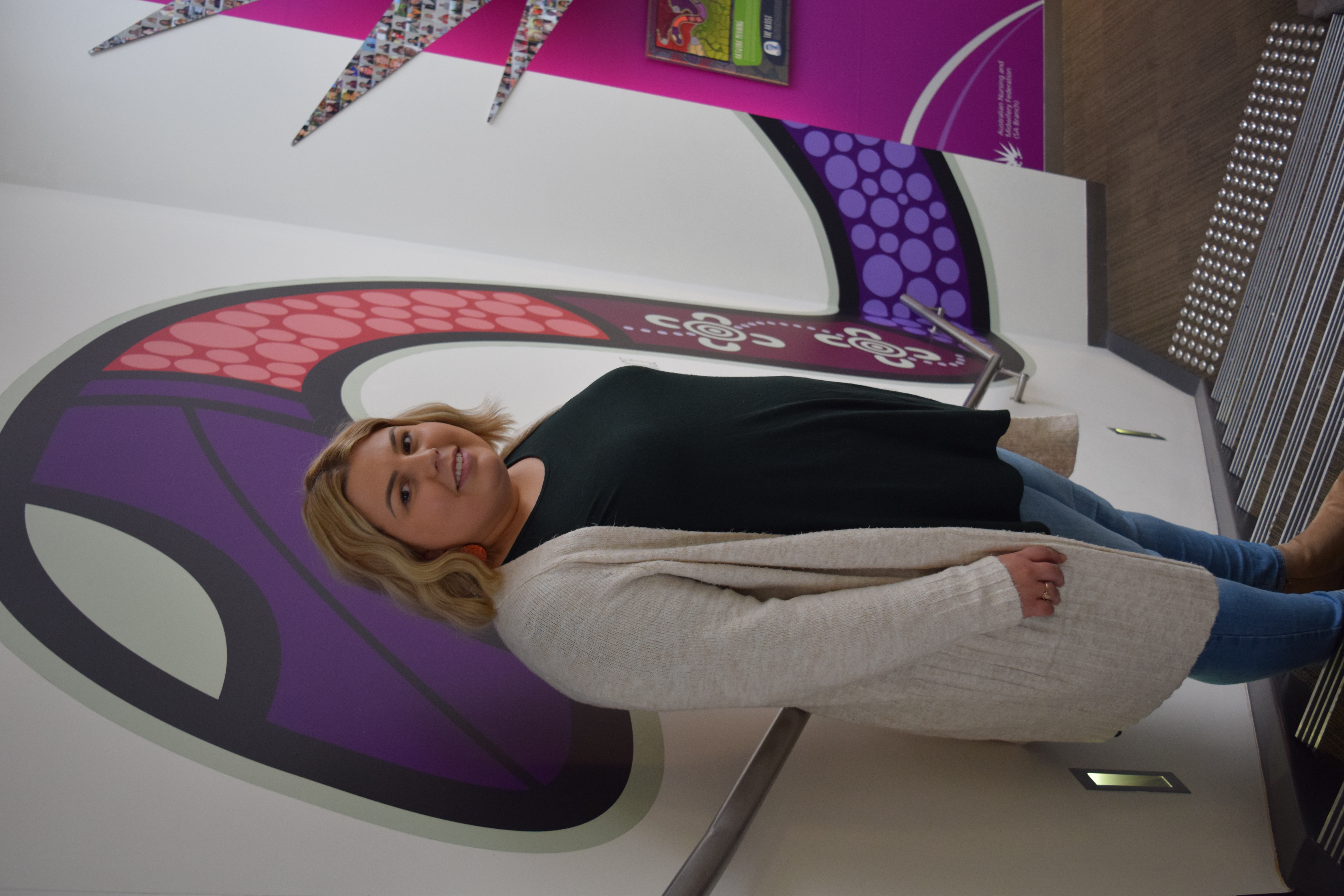27 May 2021

For Registered Midwife Tahlia Johnson, encouraging more Aboriginal and Torres Strait Islander peoples to pursue a career in health care is all about providing culturally safe practice.
“Going to hospital for Aboriginal people is where you go to die,’’ Tahlia said.
“We do need to be aware there has been generational trauma among Aboriginal people … things even to do with the Stolen Generation, how much more likely are Aboriginal people to have their babies taken, all of that.
“That’s the trauma facing those families if they need to get health care, hospital’s a bad place for them. So, we Aboriginal people aren’t likely to come into a hospital and get mainstream care.’’
Breaking down the fears and rebuilding broken trust in the health system, Tahlia says, requires having a lot more Aboriginal and Torres Strait Islander nurses and midwives “because that’s going to be the best way to have culturally safe health care’’.
Tahlia is a cultural adviser for nursing students at Flinders University, having been mentored by Indigenous educator and former ANMF (SA Branch) councillor Uncle David Copley.
She completed her midwifery degree at Flinders in 2016 (she was also born at Flinders Medical Centre) and prior to her cultural adviser role worked as midwife in a metropolitan hospital.
Currently Tahlia is also working with the ANMF (SA Branch) on our Reconciliation Action Plan (RAP).
Today is the start of National Reconciliation Week 2021 (May 27 to June 3), a week devoted to raising awareness of Indigenous culture, issues and the journey towards a fully reconciled country.
“The ANMF (SA Branch) has long advocated for the interests of Aboriginal and Torres Strait Islander peoples, with our commitment outlined in our organisational values. However, while our intent has always been clear, we have not had an endorsed reconciliation action plan to ensure we are contributing in a meaningful way,’’ said ANMF (SA Branch) CEO/Secretary Adj Associate Professor Elizabeth Dabars AM.
“This RAP is an opportunity for our organisation to learn and strengthen relationships between Aboriginal and Torres Strait Islander peoples and non-Indigenous peoples. This ongoing journey will ensure that our vision is appropriately aligned with the vision for Aboriginal and Torres Strait Islander peoples and that this is embedded in our core business.’’
The deliverables of the ANMF RAP will be in partnership with our formalised RAP Working Group, of which Tahlia is a member, to outline our commitment to improving relationships with the Aboriginal and Torres Strait Islander communities, employees, members, and the public. The Working Group will meet at least four times per year and will be responsible for developing, implementing, reviewing, and reporting progress against the RAP within the ANMF (SA Branch).
“The intention of the ANMF (SA Branch) RAP is to ensure it is ingrained into our core business to enable us to drive our contribution to reconciliation both internally and within the community,’’ Ms Dabars said.
With regard to health, it is the position of the ANMF that content relevant to the history, culture and health of Aboriginal and Torres Strait Islander peoples, including social justice issues, should continue to be mandated in all undergraduate and postgraduate curricula for nursing and midwifery students, and programs leading to endorsement and notation.
We also believe Aboriginal and Torres Strait Islander peoples should be involved in the development of accreditation standards for nursing and midwifery curricula and that they should have equitable access to nursing and midwifery education through an Australian Government commitment to further incentives and assistance to attract Aboriginal and Torres Strait Islander peoples to a career in nursing and midwifery.
Tahlia says she did experience institutionalised racism working as a midwife.
“If anybody who ticks an Aboriginal box in a hospital who takes their child in, if their child had fallen over, had bruising, for example, the parents are 70 per cent more likely to have a social worker contact them than a non-Indigenous person,’’ she says.
“I found it very difficult being in the workplace and being one of the only Aboriginal workers … not being confident enough as a new midwife to pull people up on racism was quite difficult.
“So, in the role as cultural adviser I can teach and better inform new nurses who are going out into practice about cultural safety. That’s where my passion is.
“We need a lot more Aboriginal and Torres Strait Islander nurses and midwives … we work better when there are other Aboriginal people in the workforce. We don’t like being isolated,” Tahlia says.
“If there are more Aboriginal workers then we feel more supported, so we’re going to have better outcomes.’’
For more on National Reconciliation Week go to:
https://nrw.reconciliation.org.au/ and
https://reconciliationsa.org.au
Tahlia is pictured in the ANMF (SA Branch) headquarters, alongside artwork by Indigenous artist Jordan Lovegrove of Dreamtime Creative.